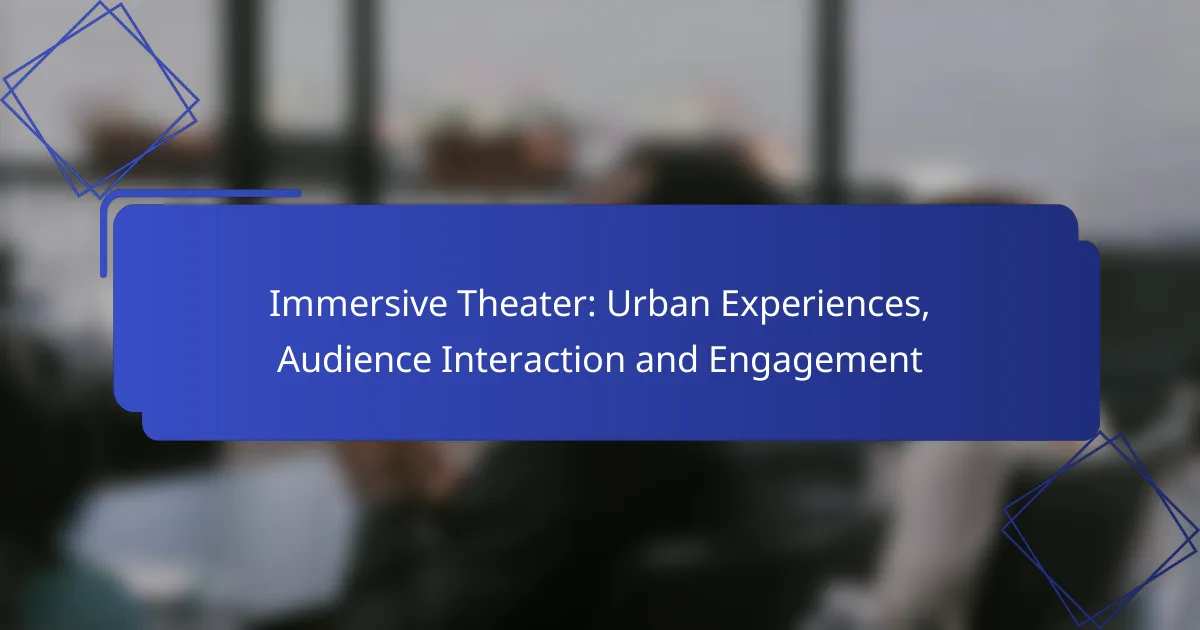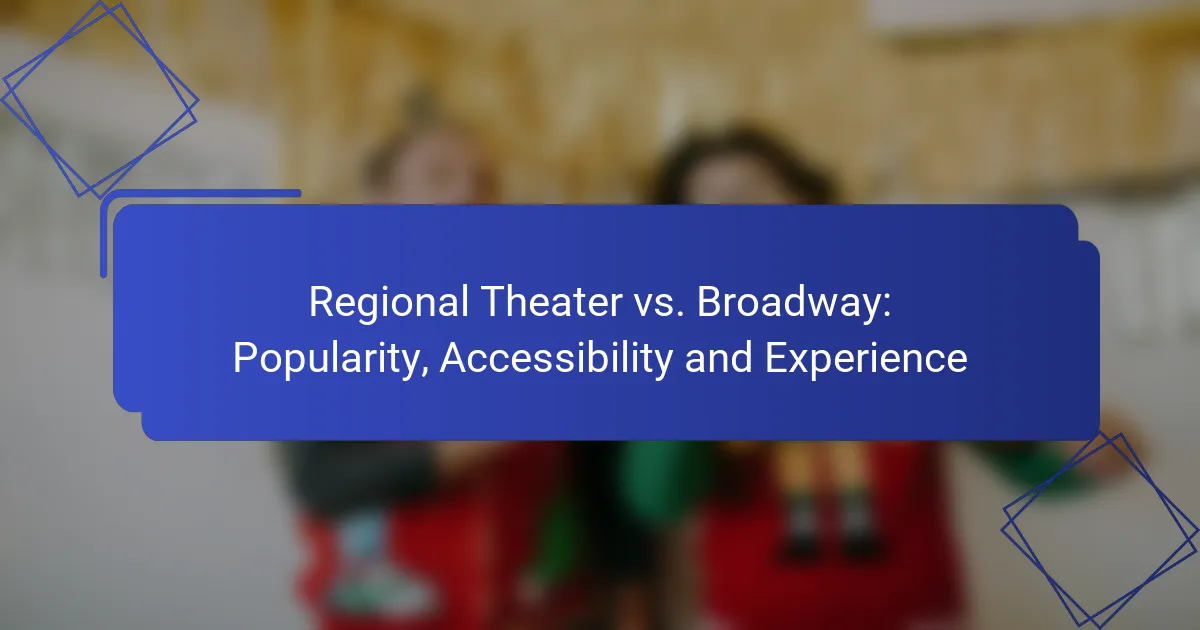Immersive theater transforms urban environments into vibrant storytelling landscapes, inviting audiences to engage with narratives in an interactive manner. By encouraging active participation and physical movement, this art form blurs the lines between performer and spectator, fostering a deeper connection to both the story and the city itself.
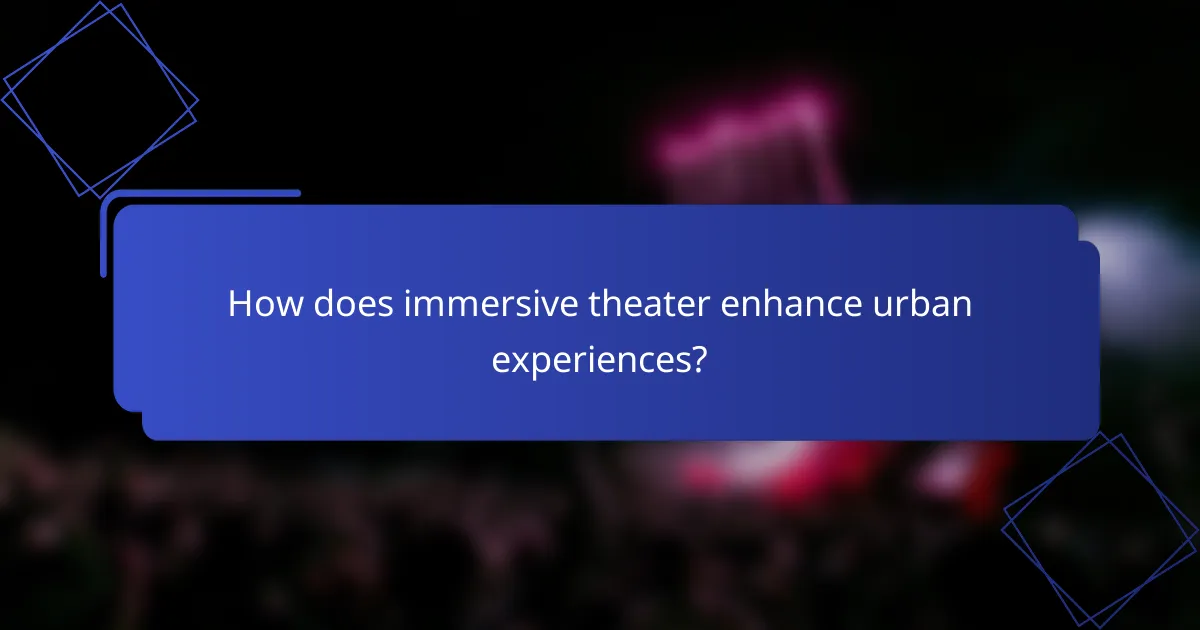
How does immersive theater enhance urban experiences?
Immersive theater enhances urban experiences by transforming public spaces into dynamic storytelling environments that engage audiences in unique ways. This form of theater encourages active participation, allowing individuals to interact with the narrative and their surroundings, ultimately enriching their connection to the city.
Engagement through unique storytelling
Immersive theater captivates audiences by weaving narratives that unfold in real-time, often in unexpected urban locations. This storytelling approach invites participants to become part of the plot, fostering deeper emotional connections to the characters and themes presented. For example, a performance might take place in a bustling market, where the audience interacts with actors while navigating through the vibrant atmosphere.
By breaking the fourth wall, immersive theater encourages individuals to explore their surroundings and engage with the story on a personal level. This level of involvement can lead to memorable experiences that resonate long after the performance ends.
Integration with local culture
Immersive theater often incorporates elements of local culture, history, and community, making each experience unique to its urban setting. This integration not only highlights the city’s identity but also fosters a sense of pride among residents. For instance, a performance might draw on local folklore or historical events, allowing audiences to connect with their heritage in a fresh way.
By collaborating with local artists and organizations, immersive theater can reflect the diverse voices and stories within a community. This approach not only enriches the narrative but also strengthens community ties and encourages cultural exchange.
Interactive environments
The design of immersive theater spaces is crucial for creating interactive environments that engage the audience. These settings can range from intimate rooms to expansive outdoor areas, each carefully crafted to enhance the storytelling experience. For example, an abandoned warehouse might be transformed into a mysterious setting where participants must solve puzzles to progress the narrative.
To maximize audience interaction, organizers should consider factors such as accessibility and comfort. Ensuring that all participants can navigate the space easily will enhance their overall experience and encourage more active engagement with the performance.

What are the key audience interactions in immersive theater?
Key audience interactions in immersive theater include active participation in the storytelling process and physical movement through the performance spaces. These interactions create a unique experience where the audience is not just a spectator but an integral part of the narrative.
Participation in narrative development
In immersive theater, audience members often influence the direction of the story through their choices and actions. This can involve making decisions that affect plot outcomes or interacting with characters to reveal personal backstories. Such participation enhances engagement and creates a personalized experience.
For example, in some productions, audiences might choose which character to follow, leading to different narrative paths. This level of involvement encourages deeper emotional connections and investment in the story, as participants feel their contributions matter.
Physical movement through performance spaces
Physical movement is a hallmark of immersive theater, allowing audiences to explore various environments and scenes at their own pace. This dynamic setup can include moving between rooms, interacting with props, or even navigating outdoor spaces, which adds a layer of realism and excitement to the experience.
When attending an immersive performance, be prepared to walk, stand, or even dance as part of the show. Some productions may have specific guidelines on movement, so it’s essential to stay aware of your surroundings and follow any instructions given by the performers to fully enjoy the experience.
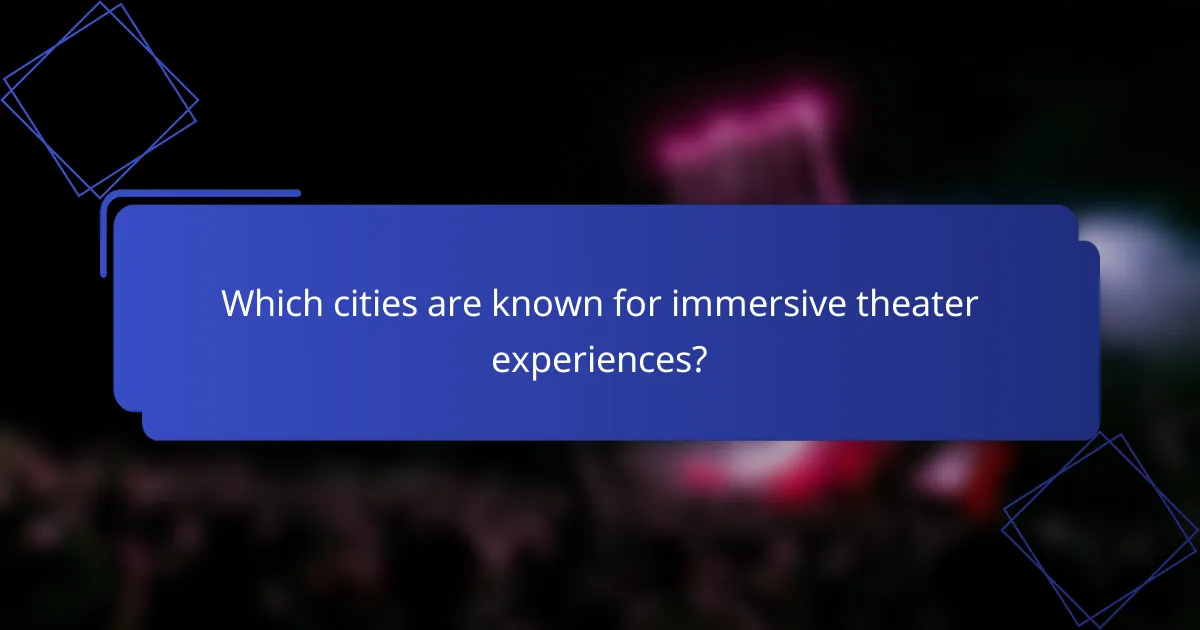
Which cities are known for immersive theater experiences?
Several cities around the world are recognized for their vibrant immersive theater scenes, where audience members actively participate in the storytelling. New York City, London, and Los Angeles are particularly notable for their innovative productions that engage viewers in unique ways.
New York City
New York City is a hub for immersive theater, featuring a variety of productions that invite audience interaction. Notable examples include “Then She Fell,” which takes place in a small, intimate setting, allowing participants to explore the narrative at their own pace.
When attending immersive shows in NYC, be prepared for a range of ticket prices, typically from around $50 to $150, depending on the production and venue. It’s advisable to book in advance, as popular shows often sell out quickly.
London
London boasts a rich tradition of immersive theater, with experiences like “The Wolf of Wall Street” and “The Great Gatsby” offering audiences a chance to step into the story. These performances often take place in unconventional spaces, enhancing the overall experience.
Tickets for immersive theater in London generally range from £30 to £100. Consider arriving early to fully engage with the environment and characters, as many productions encourage audience participation from the start.
Los Angeles
Los Angeles has emerged as a significant player in the immersive theater scene, with productions such as “The Immersive Nutcracker” and “The Diner” creating unique experiences that blend performance with interactive elements. These shows often reflect the city’s diverse culture and artistic flair.
In LA, ticket prices for immersive theater can vary widely, often between $40 and $120. It’s essential to check the venue’s guidelines regarding participation, as some productions may require a more active role from the audience than others.

What are the benefits of audience engagement in immersive theater?
Audience engagement in immersive theater enhances the overall experience by fostering a deeper connection between participants and the performance. This interaction not only enriches the narrative but also encourages active participation, making the experience more memorable and impactful.
Enhanced emotional connection
Engaging the audience in immersive theater creates a stronger emotional bond with the story and characters. When participants are invited to interact, they often feel a sense of ownership over the experience, leading to heightened empathy and emotional investment.
For example, when audience members are given roles or tasks, they become part of the narrative, which can evoke genuine feelings of joy, sadness, or excitement. This personal involvement can transform a passive viewing into an active emotional journey.
Increased memorability of performances
Immersive theater experiences tend to be more memorable due to the unique nature of audience participation. When individuals actively engage with the performance, they are more likely to remember specific moments and details long after the event has concluded.
Research suggests that interactive experiences can enhance memory retention by up to 50% compared to traditional theater. This can be attributed to the multisensory engagement and the personal connections formed during the performance, making it a standout experience in the minds of attendees.
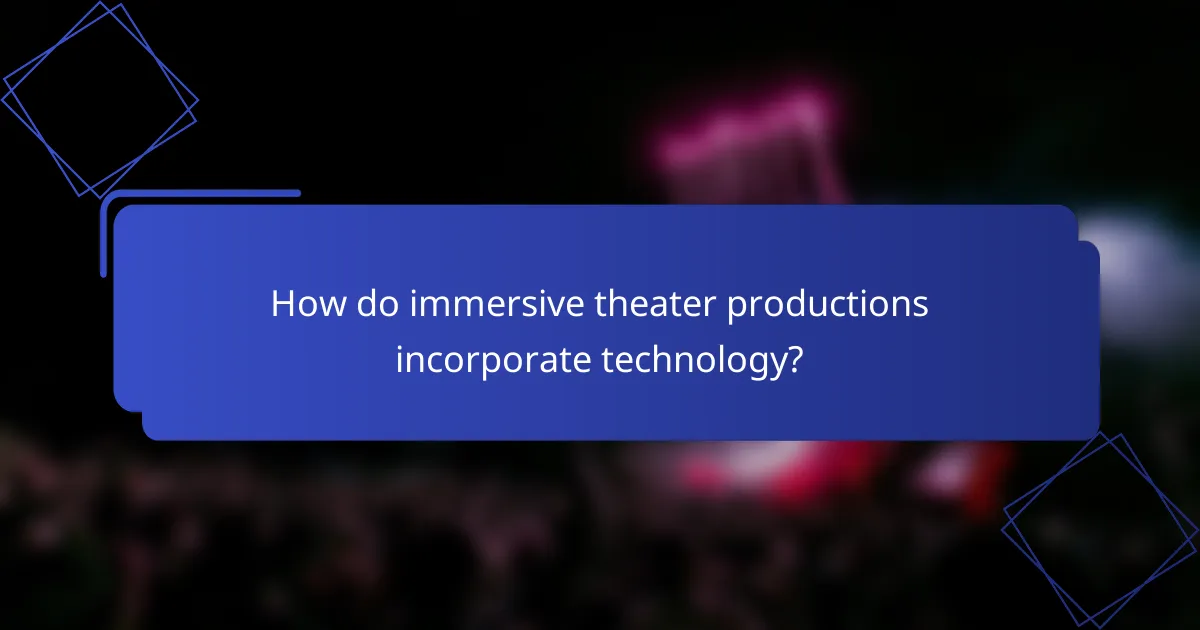
How do immersive theater productions incorporate technology?
Immersive theater productions use technology to enhance audience engagement and create interactive experiences. This integration often includes augmented reality, mobile applications, and other digital tools that allow participants to interact with the performance in real-time.
Use of augmented reality
Augmented reality (AR) in immersive theater overlays digital information onto the physical environment, enriching the storytelling experience. For example, audience members might use their smartphones or AR glasses to see additional visual elements that complement the live action, such as animated characters or contextual information about the scene.
When implementing AR, consider the technical requirements, such as the need for a stable internet connection and compatible devices. Ensuring that the AR content is intuitive and enhances the narrative is crucial for maintaining audience immersion.
Integration of mobile apps for interaction
Mobile apps serve as a powerful tool for audience interaction in immersive theater, allowing participants to make choices that influence the storyline. These apps can facilitate communication between the audience and performers, enabling real-time feedback and engagement.
When designing a mobile app for an immersive production, prioritize user-friendly navigation and seamless integration with the performance. Common features include polls, character interactions, and access to exclusive content, which can significantly enhance the overall experience.
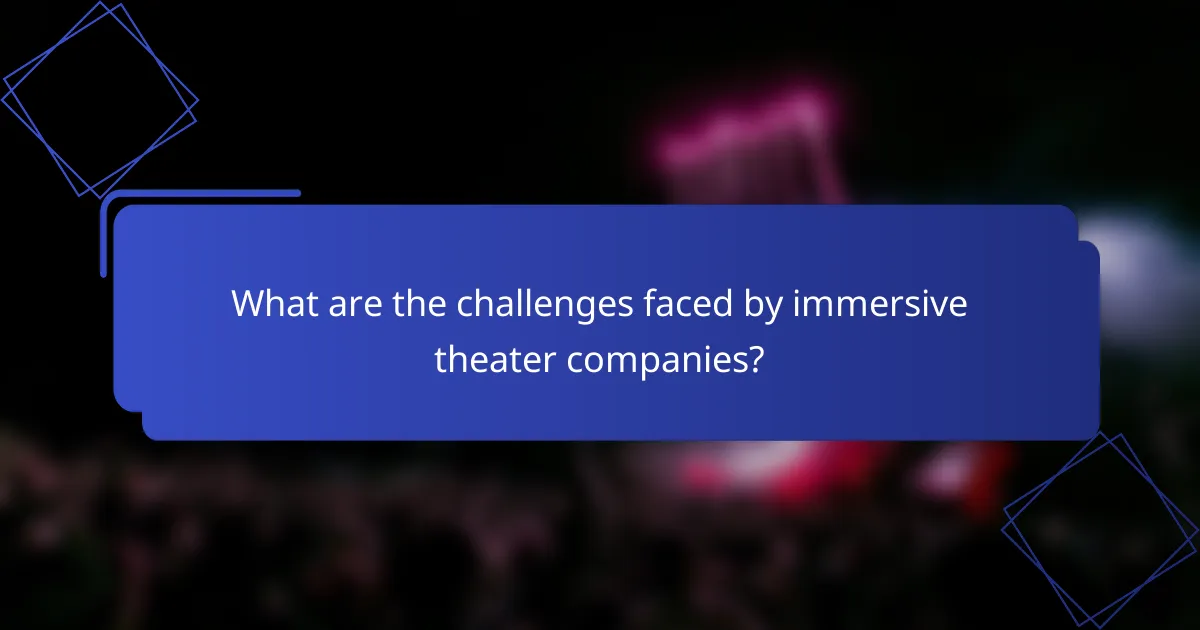
What are the challenges faced by immersive theater companies?
Immersive theater companies encounter several significant challenges that can impact their productions and audience engagement. Key issues include high production costs and audience accessibility, both of which can limit the reach and sustainability of these unique experiences.
High production costs
Producing immersive theater often requires substantial financial investment due to elaborate sets, specialized technology, and skilled personnel. Costs can range from tens of thousands to several million dollars, depending on the scale and complexity of the production.
To manage these expenses, companies may seek sponsorships, grants, or partnerships with local businesses. Additionally, utilizing innovative design techniques and local talent can help reduce costs while maintaining quality.
Audience accessibility issues
Accessibility is a critical concern for immersive theater, as physical spaces and ticket prices can limit participation. Many productions are held in unconventional venues that may not be easily accessible to individuals with disabilities, and ticket prices can vary widely, often placing them out of reach for some audiences.
To enhance accessibility, companies should consider offering tiered pricing models, discounts for students or low-income individuals, and ensuring venues comply with accessibility standards. Engaging with community organizations can also help identify barriers and promote inclusivity.
